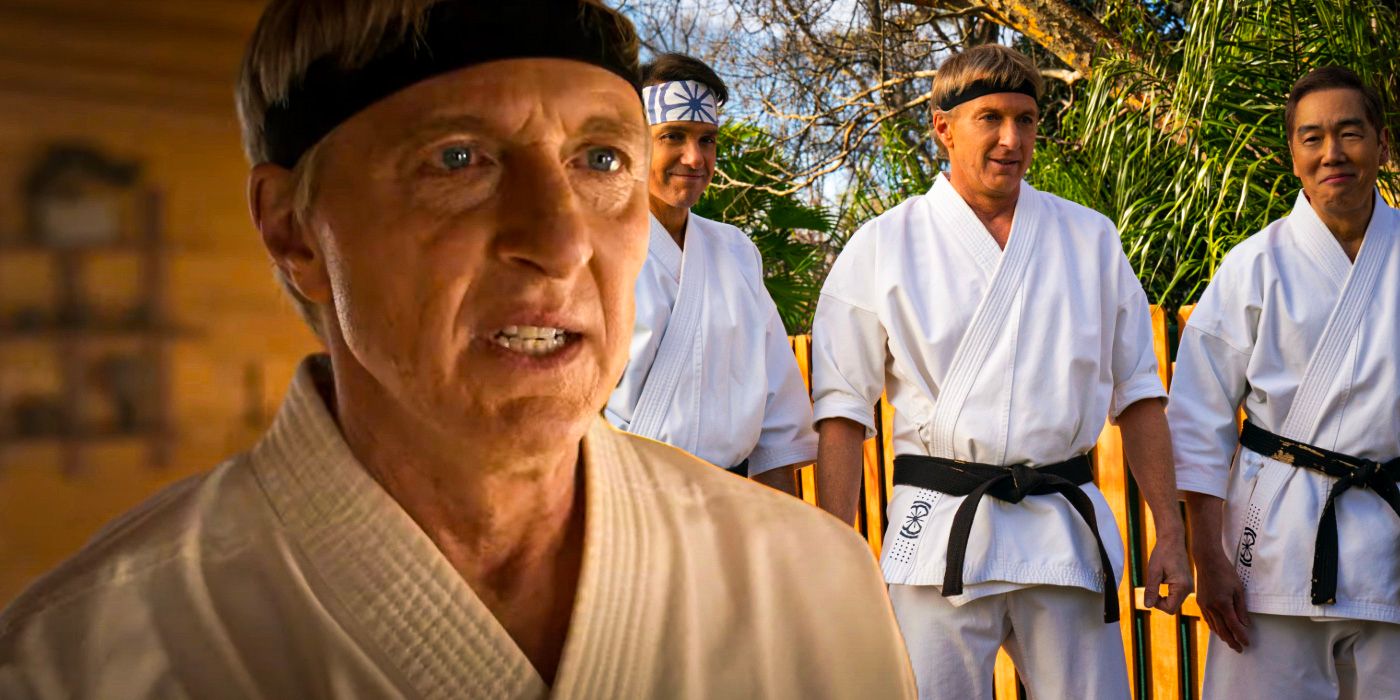In the midst of a dearth of live sporting events, the Ultimate Fighting Championship returned in spectacular form last week. Despite their taking place in an eerily quiet arena, the unprecedented three events in the space of seven days carried all the usual excitement of the sport, showcasing the flashy striking, technical grappling, and big personalities that define the promotion. With this recent refresher, it is a great time to get in on the action in the most recent video game version of the sport, EA Sports UFC 3. Even two years after its release, the game holds up in its sharp recreation of many of the big-name fighters still on the roster and its in-depth recreation of the multi-dimensional nature of mixed martial arts competition.
The complexity that makes UFC 3 accurate and interesting can also make it quite daunting for new players, especially given the relatively limited tutorial section. To succeed in the octagon, it is important to have a handle on how to use the fighter to their strengths, using all the tools available to pave a clear path to success in the space of 3 to 5 rounds. This guide will provide players with some of the basic tips and tricks to begin mastering the game, including how to choose or create a fighter, mastering the stand-up striking game, and dominating on the ground. With lots of practice and a little luck, players will soon find themselves wracking up wins, performance bonuses, and maybe even an invitation to Fight Island.
EA Sports UFC 3: Choosing a Fighter
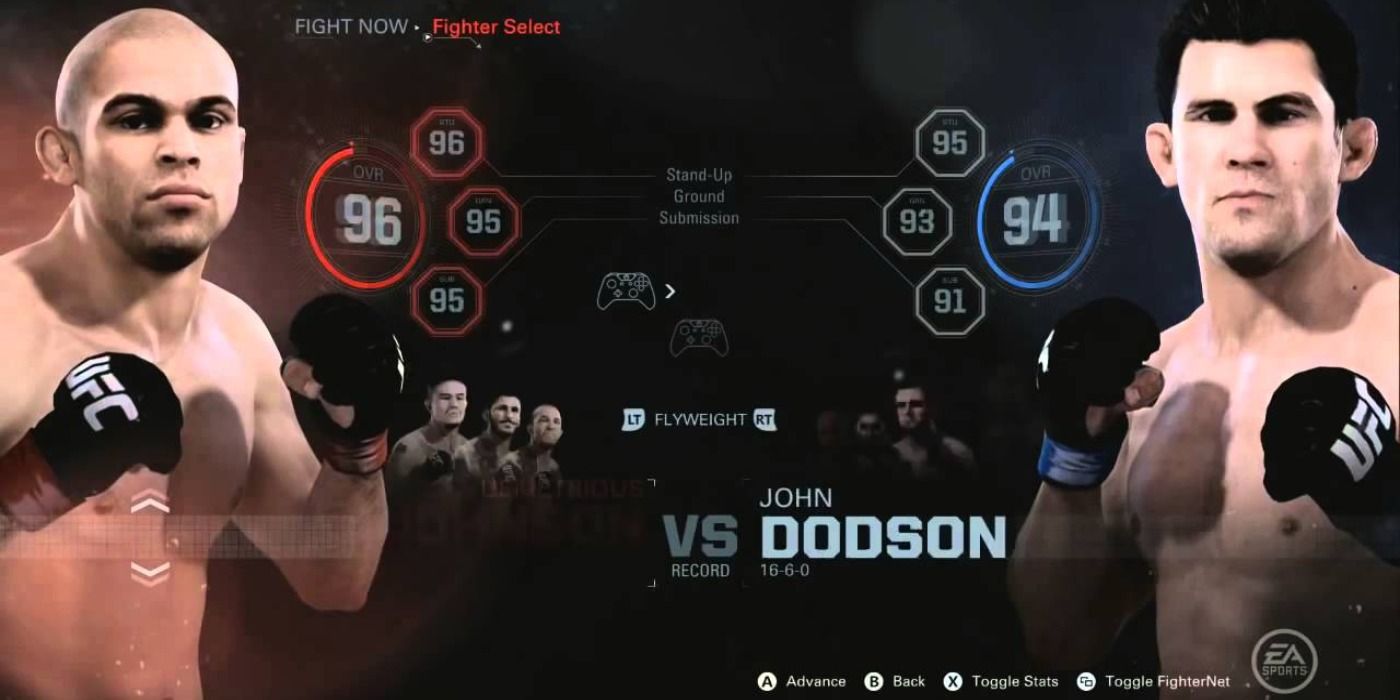
With a roster of over 230 fighters spread across 1o weight divisions, picking a character – or making one to add to this already expansive list – can be overwhelming. However, there are some particular aspects to consider that can help narrow this choice based around the style of fighting the player wishes to engage in, particular capabilities, and move sets. While each fighter can engage in every aspect of the combat system, they are tailored to be proficient in different areas, making them more formidable if played in line with their strengths. A submission specialist can box, for example, but would be better served trying to take a fight to the ground to capitalize on more advanced finishing techniques.
The first thing to consider is weight class. As a general rule, the weight classes represent a sliding scale of speed and power. For example, flyweight fighters tend to be lightning-fast and agile but lack in brute force and single-strike stopping power, while heavyweights have the muscle to drop opponents with a well-placed punch but tend to move a bit more sluggishly and lose out on some of the more acrobatic techniques of their smaller compatriots. While this is somewhat relative – certain fighters will be quicker or stronger relative to others in their division – it is wise to pick from the division that exists closes to the balance of power and pace desired for the player’s style.
It is possible to get a rough idea of character fighting styles by looking at the first two stats under the character portraits in the fighter selection menu – striking and grappling. Characters with higher striking values than grappling tend to do better on the feet, while those with comparably higher grappling typically can exert more control once they have taken an opponent down. While these stats will give a good rough estimate, it is possible to dig a little deeper. By opening the Career Mode tab and selecting the Import a Fighter option, it is possible to see what the specific style of each fighter is from the five broad categories available in the game – Striker, Brawler, Balanced, Grappler, and Submission Specialist. Brawlers and Strikers are the stand-up side of the spectrum; brawlers prioritize power and resilience, while strikers rely on sharp movements and high speed. On the other end are the two experts of ground fighting, divided similarly; while grapplers are proficient at maintaining controlling positions and deliver damage on the ground, submissions specialists have access to a wider range of submission techniques, able to seek a finish from various grapple positions. Balanced is close to an all-arounder archetype – fairly competent striking or grappling, but with no exceptional skill in either direction.
EA Sports UFC 3: Striking Essentials
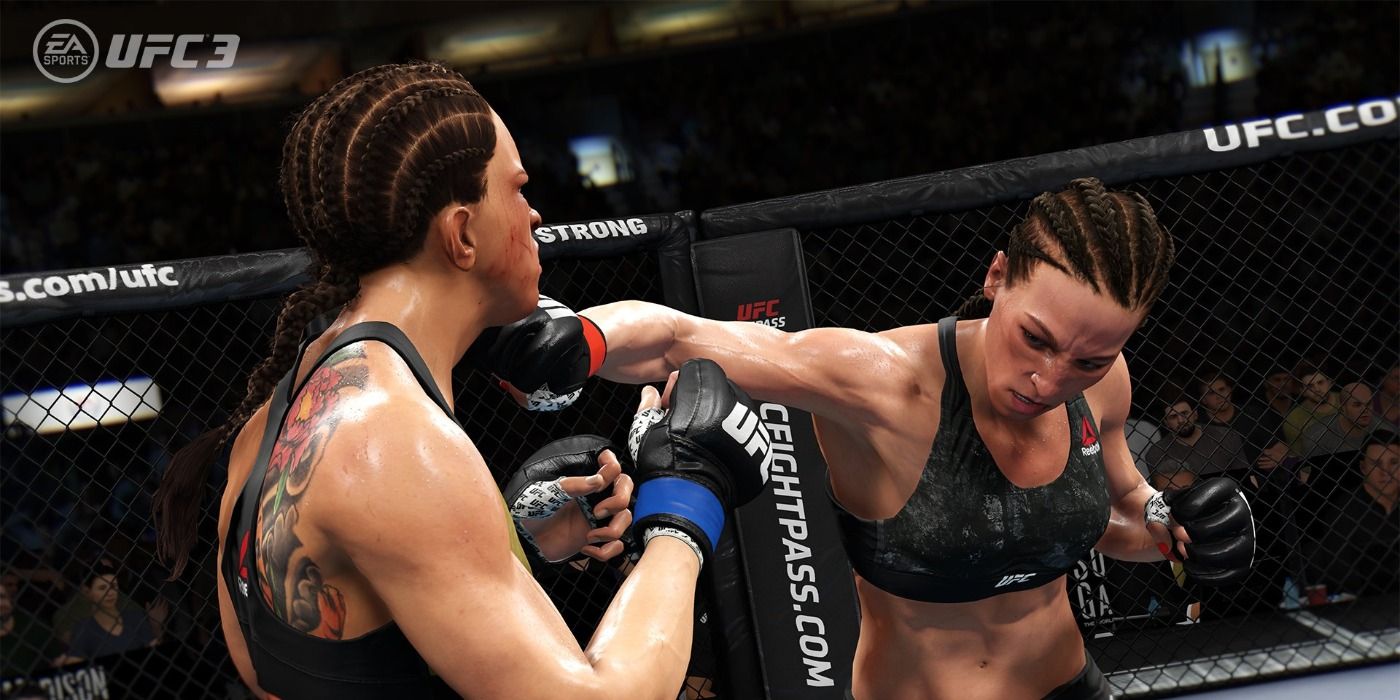
The core mechanic of striking in UFC 3 is the stamina gauge. Throwing punches and kicks, blocking incoming attacks, using dynamic head and body movement, and takedown attempts all consume stamina, represented by the yellow bar next to player names at the top of the screen. While this bar regenerates fairly quickly, using certain techniques (such as kicks, spinning attacks, and grappling contests) and fully depleting the bar cause the maximum available stamina to decrease, limiting the fighter’s ability to make consecutive attacks. While some of the maximum capacity is restored between rounds, it is never fully restored, leading to a disadvantage as the fight progresses Additionally, fully depleting the stamina bar will put the character in to a vulnerability state; the bar flashes grey, during which time the character can only throw single strikes at reduced damage and is exceptionally susceptible to receiving damage. It is important to preserve stamina as much as possible – some good ways to do so include attacking in combinations (which consume less stamina than multiple independent attacks) and retreating, allowing the gauge to refill before pressing the attack.
Another mechanic to bear in mind is the regional damage system. The head, body, and legs each have health bars that can be targeted with strikes. Emptying the refillable health bar on each part will lead to a health event, leaving the opponent vulnerable to fight-finishing attacks and reducing their mobility for the duration. Additionally, like the stamina bar, the maximum capacity of the bars can be reduced with successive attacks. This can be taken advantage of to great effect by mixing up targets – while only attacking the head may lead to an early knockout, damaging the other parts of the body as well will slow down the opponent’s movement and reducing their ability to counter-attack. Additionally, that variation will make attacks unpredictable, increasing the chance of avoiding blocks and scoring critical hits on vulnerable areas.
EA Sports UFC 3: Grappling Basics
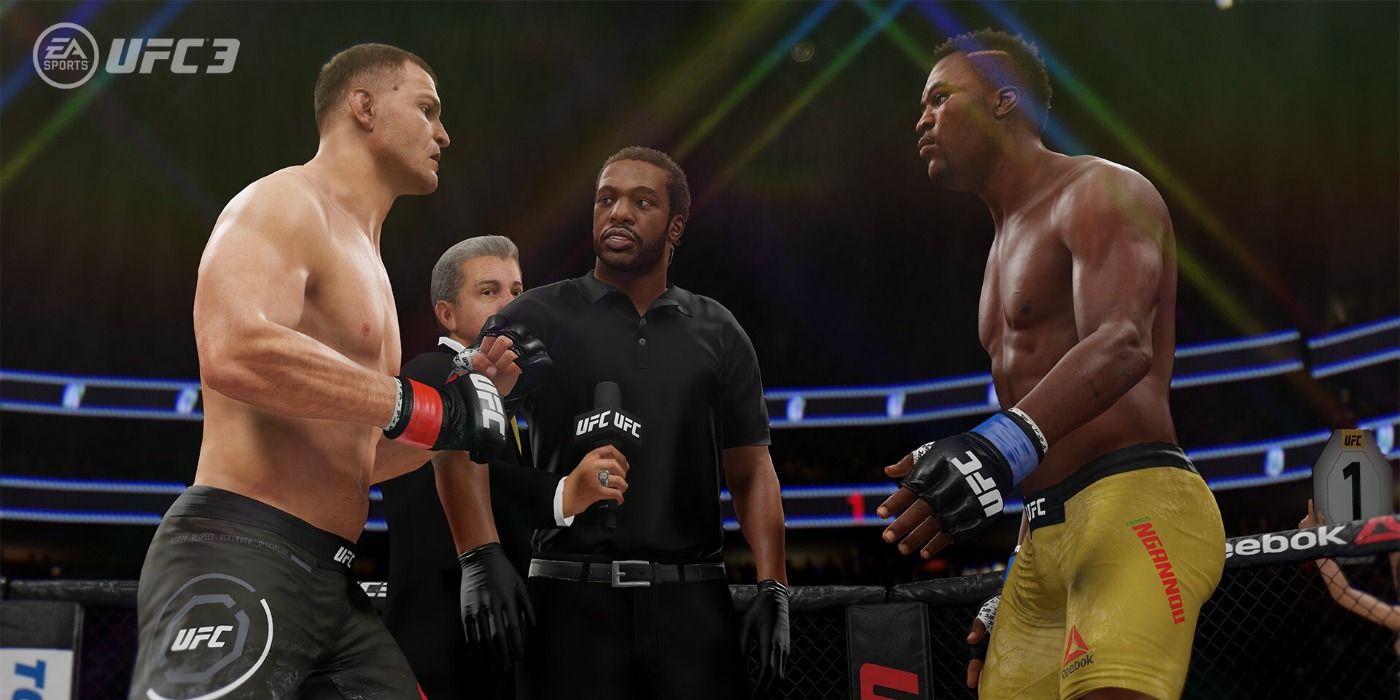
Where the stand-up part of the game requires a good deal of aggression to be successful, the ground game requires a great deal more patience. Stamina is burnt especially quickly on the ground – a blocked position change alone can deplete as much as half of a full stamina bar. Due to this, it is advisable to stay defensive when taken to the ground. Keep an eye on the grapple advantage meter – it will appear in the top center of the screen, between the stamina bars of the opposing fighters. Only attempt to change transitions when the advantage swings in the player’s favor – it can be influenced by blocking effectively, landing strikes, and maintaining a defensive position. Holding the block button and waiting to block a position change attempt is particularly effective in gaining this advantage – it does double duty in both giving a good pop to advantage and keeping protection against incoming strikes solid.
Submissions attempts are also governed by the stamina bar – and also rely on a good deal of patience. Waiting for a dip in the opponent’s stamina – after an unsuccessful transition attempt for example – before jumping in with an attempt will drastically improve the chance of success, as doing so results in their escape meter filling much more slowly and easier to react to. With that being said, submission attempts can also be an excellent way to buy time. If getting out of a tough situation is proving untenable, throwing in a submission attempt can help inch the end of the round closer, opening up the possibility of being, quite literally, saved by the bell, ultimately saving both the match and a good deal of damage.
EA Sports UFC 3: Where to Practice
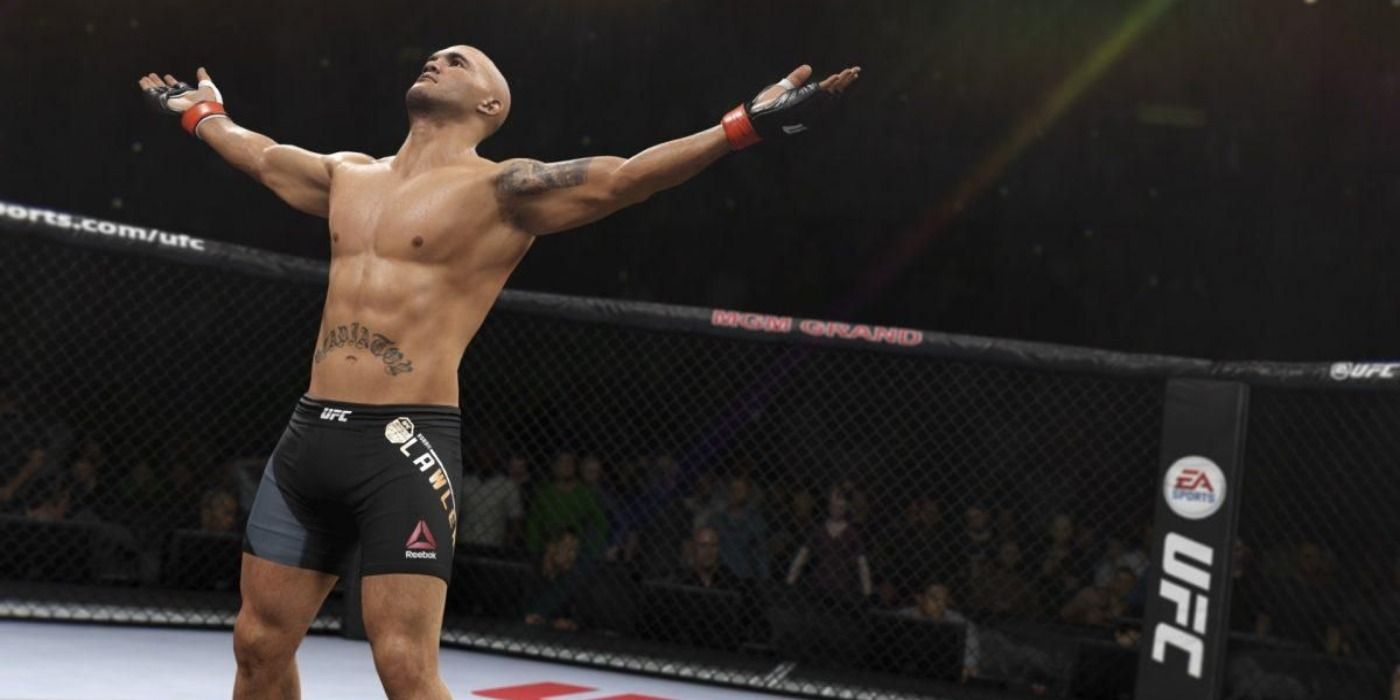
All of the aforementioned hints are easier to apply in theory than in practice, making some thorough practice necessary to in-ring success. The practice mode tucked away on the far right of the main menu, is helpful with some tweaking. When just starting out, make sure that the stamina bar is on. Stamina management is at the heart of this game, and being able to feel it out, seeing what works, what doesn’t, and what costs the most to pull off is worth getting used to. Practice mode also allows the unique opportunity to look at a comprehensive list of each fighter’s moves, move levels, and available combinations. These are worth keeping in mind – if, for example, a fighter a level 5 lead head kick and a regular head kick of only level 2, it may be worth tailoring a strategy around landing that heavier, higher damage strike.
Another excellent practice route is taking advantage of the curve of the story mode. As the game begins with amateur fighters, both the stats and the risks are lower. Fighting through the story allows getting a feel for the game more gradually than jumping in the deep end of online play while still maintaining the multi-dimensionality of the in-game combat system. Grinding through the first two sections, the WFA and Prospect contracts, is especially helpful, providing an adequate amount of challenge with a more forgiving pace. Get a feel for the movement, keep your hands up, and sooner rather than later you’ll be wearing the championship gold. #ANDNEW.
EA Sports UFC 3 is available now on PS4 and Xbox One.
